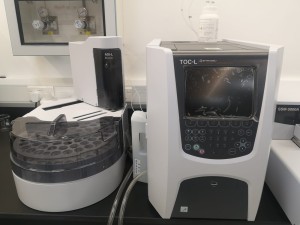
The Importance of Total Organic Carbon (TOC) Analysis in Drinking Water
Total Organic Carbon (TOC) analysis is a crucial method in assessing the quality of drinking water. TOC refers to the amount of carbon found in organic compounds within water and serves as a key indicator of water contamination and quality. Organic carbon in drinking water can originate from natural sources, such as decaying vegetation, or from human activities, including agricultural runoff and wastewater discharge. The significance of TOC analysis spans environmental, health, regulatory, and operational dimensions, making it a vital tool for ensuring safe and clean drinking water.
Health Implications
The presence of organic carbon in drinking water is a concern primarily due to its potential to form disinfection by-products (DBPs) when the water undergoes treatment processes, particularly chlorination. DBPs, such as trihalomethanes (THMs) and haloacetic acids (HAAs), are harmful to human health. Long-term exposure to these by-products has been associated with increased risks of cancer and other adverse health effects. By monitoring TOC levels, water treatment facilities can better control the formation of DBPs and mitigate the associated health risks. Thus, TOC analysis directly contributes to protecting public health by ensuring that drinking water remains free from harmful by-products.
Environmental Considerations
TOC analysis is also essential from an environmental perspective. High levels of organic carbon in water bodies can lead to eutrophication, a process that results in excessive growth of algae and other aquatic plants. This phenomenon depletes oxygen levels in the water, causing harm to aquatic life and disrupting ecosystems. By regularly monitoring and managing TOC levels, it is possible to prevent eutrophication and maintain the ecological balance in natural water bodies. Moreover, understanding the sources and variations of TOC can help in implementing effective watershed management practices to protect drinking water sources.
Regulatory Compliance
Regulatory bodies, such as the U.S. Environmental Protection Agency (EPA), have established guidelines and standards for TOC levels in drinking water to safeguard public health. Compliance with these regulations is mandatory for water utilities to ensure the provision of safe drinking water. TOC analysis is a critical component of these regulatory frameworks, providing the necessary data to demonstrate adherence to the set standards. Regular TOC monitoring helps water utilities identify potential issues early, allowing for timely interventions and adjustments in water treatment processes to maintain compliance and avoid legal penalties.
Operational Efficiency
For water treatment facilities, TOC analysis is indispensable for optimizing operational efficiency. High TOC levels indicate the presence of organic matter that can interfere with water treatment processes. For example, organic compounds can react with disinfectants, reducing their efficacy and necessitating higher doses, which in turn can increase operational costs. By continuously monitoring TOC, treatment plants can adjust their processes to achieve optimal performance. This not only ensures the effective removal of contaminants but also enhances the overall efficiency and cost-effectiveness of the treatment operations.
Analytical Methods for TOC Measurement
Several methods are available for TOC analysis, each with its advantages and limitations. The most commonly used methods include combustion, chemical oxidation, and ultraviolet (UV) persulfate oxidation.
1. Combustion Method: In this method, organic carbon is oxidized at high temperatures to produce carbon dioxide, which is then measured to determine the TOC concentration. This method is highly accurate and reliable but requires sophisticated equipment and trained personnel.
2. Chemical Oxidation: This technique involves the oxidation of organic matter using strong chemical oxidants, such as potassium dichromate. The amount of oxidant consumed is proportional to the TOC concentration. While this method is relatively simple, it may not fully oxidize all types of organic compounds.
3. UV Persulfate Oxidation: In this method, organic carbon is oxidized using UV light and persulfate. This approach is effective for a wide range of organic compounds and is commonly used for routine TOC analysis in water treatment plants.
Each of these methods provides valuable data on TOC levels, aiding in the comprehensive assessment of water quality.
Challenges and Future Directions
Despite its importance, TOC analysis faces several challenges. One significant challenge is the variability in TOC composition, which can complicate the interpretation of results and the selection of appropriate treatment strategies. Additionally, the presence of inorganic carbon compounds can interfere with TOC measurements, necessitating careful sample preparation and analysis.
To address these challenges, ongoing research and technological advancements are focused on developing more accurate and reliable TOC measurement techniques. Innovations such as advanced sensors and real-time monitoring systems are enhancing the ability to detect and quantify TOC levels more efficiently. Furthermore, integrating TOC analysis with other water quality parameters, such as microbial content and chemical pollutants, is helping to provide a more comprehensive understanding of water quality and safety.
